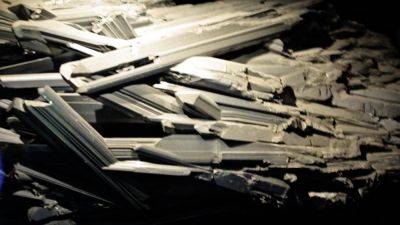Climate change is gentrifying neighborhoods. In Miami, residents fear high prices — and a lost soul
MIAMI — Nicole Crooks stood in the plaza of the historic Lyric Theater, a royal blue hat shielding her from the midday sun that baked Miami.
In its heyday, the theater, in the city's Overtown neighborhood, was an important cultural hub for the Black community. James Brown, Sam Cooke, Ray Charles, Aretha Franklin and Ella Fitzgerald performed there, in the heart of "Little Broadway," for esteemed audience members such as Jackie Robinson and Joe Louis.
Now, on that day in mid-March, the towering shell of a future high-rise development and a pair of yellow construction cranes loomed over the cultural landmark. It's a visual reminder of the changing face of the neighborhood — and rising costs for longtime residents.
Located inland, far from prized beachfront real estate, Overtown was once shunned by developers and wealthy homeowners, said Crooks, a community engagement manager at Catalyst Miami, a nonprofit focused on equity and justice.
But as Miami has become ground zero for climate change, Overtown has also become a hot spot for developers fleeing rising seas and coastal flood risk, say climate experts and community advocates.
That's because Overtown — like districts such as Allapattah, Liberty City, Little Haiti and parts of Coconut Grove — sits along the Miami Rock Ridge. This elevated limestone spine is nine feet above sea level, on average — about three feet higher than Miami's overall average.
A development boom in these districts is changing the face of these historically Black neighborhoods and driving up prices, longtime residents tell CNBC. The dynamic is known as «climate gentrification.»
More from Personal Finance:
Why your finances aren't insulated from climate change
People are moving to Miami and

 cnbc.com
cnbc.com


















